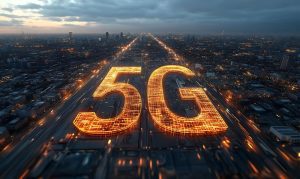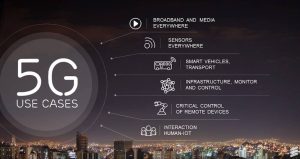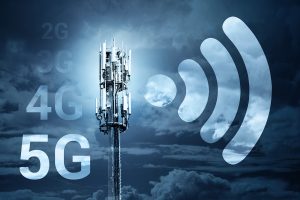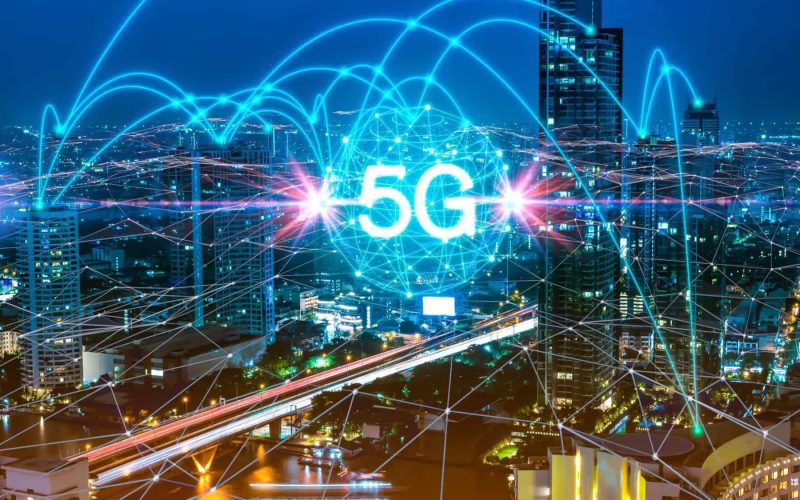The next generation of mobile networks, 5G, is set to revolutionize the way we connect and interact with technology. Offering blazing speeds, lower latency, and unprecedented connectivity, 5G technology takes a giant leap from its predecessor, 4G LTE. But what exactly is 5G, and how does it work? More importantly, how will it benefit businesses and everyday users?
In this article, we will explore the key aspects of 5G network technology, how it works, its advantages, and real-world applications. We will also dive into case studies that showcase how 5G is transforming various industries, from entertainment to transportation.
What Is 5G Technology?
5G is the fifth generation of mobile network technology, designed to deliver faster speeds, reduced latency, and more reliable connections on a massive scale. While 4G LTE networks provided speeds of up to 1 Gbps, 5G has the potential to reach peak speeds of 20 Gbps, significantly improving data transfer rates. More importantly, 5G is about much more than speed; it promises to enhance connectivity by providing smoother, more stable connections, even in dense urban environments.
At its core, 5G operates through virtualization and cloud-based technologies. Unlike previous generations, which focused on improving basic connectivity, 5G leverages advanced network functions, such as software-driven architecture and edge computing, to deliver smarter and faster digital experiences.
How Does 5G Network Technology Work?

5G technology works by utilizing higher frequency radio waves, known as millimeter waves (mmWave), which allow for faster data transmission. These waves, combined with lower frequency bands used in 4G, provide the perfect balance of speed and range.
To manage this advanced connectivity, 5G networks employ a dense, distributed-access architecture. This means that data processing occurs closer to users, at the network’s edge, allowing for faster response times and reduced latency. In practice, this distributed architecture enables smoother real-time applications, such as videoconferencing, online gaming, and even remote surgery.
Another key feature of 5G is its ability to offer seamless roaming between cellular networks and Wi-Fi. With open mobility solutions, users can switch between networks without any interruption, making it easier to stay connected, whether outdoors or inside buildings. This seamless connection is bolstered by the new Wi-Fi 6 standard, which enhances both coverage and performance.
Key Benefits of 5G Technology
1. Blazing Fast Speeds
One of the most anticipated benefits of 5G technology is its unparalleled speed. While 4G LTE networks cap out at about 1 Gbps, 5G can reach up to 20 Gbps under ideal conditions. This means that downloading large files, streaming ultra-high-definition (UHD) content, and playing cloud-based games can happen almost instantaneously.
Example: Imagine downloading an entire HD movie in just a few seconds. With 5G, this is a reality. Whether you’re downloading a 4K video or updating a video game, 5G ensures that your data needs are met quickly and efficiently.
2. Low Latency for Real-Time Applications
Latency, or the delay before data transfer begins, is drastically reduced in 5G networks. The lower latency allows for near-instantaneous data transmission, making 5G particularly useful for real-time applications.
Example: Online gaming is one area where reduced latency is especially beneficial. With 5G, gamers experience smoother, more responsive gameplay, which is crucial for competitive gaming.
Case Study: Cloud Gaming
One of the most prominent examples of 5G in action is cloud gaming. Google Stadia and Microsoft’s Xbox Cloud Gaming services have leveraged 5G’s low latency to provide a console-quality gaming experience via streaming. Players can enjoy graphically intense games without the need for expensive hardware, as 5G ensures minimal delay between inputs and on-screen action.
3. Improved Connectivity in Urban and Rural Areas

Another major advantage of 5G technology is its ability to improve connectivity in underserved areas. Whether in densely populated urban environments or remote rural regions, 5G can provide reliable internet access where traditional networks might struggle.
Case Study: 5G in Rural Areas
In India, a project was launched to test 5G networks in remote villages. The goal was to bridge the digital divide and provide internet access to areas that lacked reliable 4G coverage. Early results have been promising, with 5G networks delivering strong connections that enable e-learning, telemedicine, and other vital services to communities that were previously left behind.
4. Enhanced Support for IoT Devices
The Internet of Things (IoT) relies on devices communicating with one another to perform complex tasks. 5G networks, with their higher capacity and speed, allow IoT devices to operate more efficiently and handle more data. This has a wide range of applications, from smart homes to industrial automation.
Example: In smart cities, 5G can facilitate better traffic management, energy efficiency, and public safety. With IoT devices such as sensors and cameras constantly gathering data, 5G ensures that this data is transmitted and processed in real-time, improving the overall functionality of urban infrastructure.
5. Seamless Mobility Across Networks
With 5G, mobile users can seamlessly move between cellular and Wi-Fi networks without needing to reauthenticate. This is particularly useful for businesses, where employees may need to switch between office Wi-Fi and mobile networks throughout the day.
Example: In a smart office environment, 5G ensures that video calls, file transfers, and other tasks can continue uninterrupted as users move from one part of the building to another, or even as they leave the office for a remote location.
5G and Wi-Fi 6: A Perfect Partnership

Wi-Fi 6, also known as 802.11ax, works hand in hand with 5G to provide better geographical coverage and lower cost per bit. Both technologies use advanced automation and software-driven networks to improve performance. However, while 5G focuses on mobile networks, Wi-Fi 6 is designed for local area networks (LANs) and complements 5G in indoor environments.
Example: A stadium equipped with Wi-Fi 6 radios can provide better coverage and capacity during major events. Paired with 5G, this ensures that thousands of attendees can access fast, reliable internet without overwhelming the network.
Real-World Applications of 5G Technology
1. Self-Driving Cars
5G’s low latency and high reliability make it the ideal network for autonomous vehicles. Self-driving cars rely on real-time data from sensors, cameras, and other vehicles to navigate safely. With 5G, this data can be transmitted and processed instantly, reducing the chances of accidents.
Example: Tesla and other autonomous vehicle manufacturers are already testing the potential of 5G to enable smarter, safer driving. By using edge computing, vehicles can make split-second decisions based on real-time data, enhancing the overall driving experience.
2. Telemedicine
Telemedicine has seen explosive growth in recent years, and 5G technology is set to take it to the next level. Doctors can use 5G’s low latency and high-quality video streams to conduct remote surgeries and consultations.
Case Study: Remote Surgery
In 2020, a Chinese doctor performed the world’s first remote surgery using a 5G connection. The low latency of the 5G network allowed the doctor to control robotic arms and perform the surgery on a patient located miles away. This breakthrough could revolutionize healthcare, making advanced medical procedures accessible in remote areas.
3. Augmented and Virtual Reality (AR/VR)
5G enables smoother, more immersive experiences in AR and VR. These technologies are being used in industries ranging from entertainment to education, allowing users to interact with digital environments in real-time.
Example: Museums are using AR to provide interactive exhibits, while companies like Facebook and Google are investing in VR for business meetings and virtual collaboration. With 5G, these experiences are becoming more accessible and realistic.
Final Thought
The arrival of 5G technology marks a new era in connectivity, bringing faster speeds, lower latency, and improved reliability to a wide range of applications. From gaming and entertainment to healthcare and transportation, 5G is poised to transform industries and improve the way we live and work.
As 5G networks continue to roll out globally, the potential for innovation is limitless. Whether you’re a business looking to enhance productivity or a consumer seeking better digital experiences, 5G promises to deliver the connected future we’ve all been waiting for.












